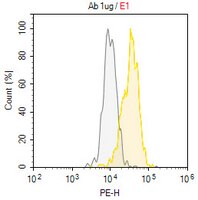MABS2287-100UG Sigma-AldrichAnti-Jagged2 Antibody, clone HMJ2-1
Anti-Jagged2, clone HMJ2-1, Cat. No. MABS2287-100UG is an Armenian hamster monoclonal antibody that detects Jagged2 and is tested for use in Flow Cytometry, Agonist, and ELISA.
More>> Anti-Jagged2, clone HMJ2-1, Cat. No. MABS2287-100UG is an Armenian hamster monoclonal antibody that detects Jagged2 and is tested for use in Flow Cytometry, Agonist, and ELISA. Less<<Recommended Products
Overview
| Replacement Information |
|---|
| References |
|---|
| Product Information | |
|---|---|
| Format | Purified |
| Presentation | Purified Armenian hamster monoclonal antibody in PBS without azide. |
| Quality Segment | MQ200 |
| Physicochemical Information |
|---|
| Dimensions |
|---|
| Materials Information |
|---|
| Toxicological Information |
|---|
| Safety Information according to GHS |
|---|
| Safety Information |
|---|
| Packaging Information | |
|---|---|
| Material Size | 100 μg |
| Transport Information |
|---|
| Supplemental Information |
|---|
| Specifications |
|---|
| Global Trade ITEM Number | |
|---|---|
| Catalogue Number | GTIN |
| MABS2287-100UG | 04065272290371 |
Documentation
Anti-Jagged2 Antibody, clone HMJ2-1 SDS
| Title |
|---|
Anti-Jagged2 Antibody, clone HMJ2-1 Certificates of Analysis
| Title | Lot Number |
|---|---|
| Anti-Jagged2, clone HMJ2-1 - Q4205303 | Q4205303 |








